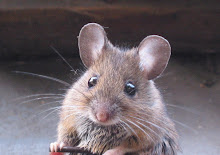My exposure to comic books/graphic novels has been fairly limited. I’ve got a BtVS Season 8 subscription; when I have extra cash, I buy the trades for Y: the Last Man and Fables, trying to collect each complete series; I’ve got my copy of Watchmen, of course. But I don’t know much about the traditional costumed heroes*. So it was with slight trepidation that I picked up Neil Gaiman and Dave McKean’s Black Orchid from the library. (I’d actually hoped to start his Sandman series, but the first five volumes were already checked out and it didn’t seem to make sense to start with VI.) Black Orchid it was, then.
Right off the bat it was clear that this was not your normal comic book, particularly since the main character, the heroine of the piece, gets murdered within the first few pages. And not in a kill-Selena-Kyle/awaken-Catwoman sort of way. This is the superhero herself, shot, burned and then blown to bits in a huge explosion. Well, huh, I thought, where do we go from here?
Where we go, where Gaiman and McKean (longtime collaborators on numerous projects) take us, an amazingly creative and ultimately hopeful place. When the crime fighting costumed superhero Black Orchid is killed, some of her consciousness makes its way back to the greenhouse from whence she came, and awakens one of her sisters growing there. She wasn’t entirely human, you see, but a human/plant hybrid created by a slightly mad scientist when her human progenitor, Susan, the love of his life, was murdered. The orchid-woman who awakens isn’t exactly the same as the Black Orchid; this new one abhors violence, seeks – both literally and figuratively – her roots and tries to find purpose in this life that was thrust upon her so abruptly.
Many men** affect her life as she makes her journey: Susan’s sleazebag ex-husband, Carl, just released from prison; Lex Luthor – always looking for the next big thing, and thinking that human/plant hybrids might be it – and his minions; Phil Sylvian, the scientist who created the orchid-women … and with these men violence follows.
But the ending of the book is a surprise – more so even than killing off your heroine right from the get-go – and a departure from comic book tropes that finds resolution in giant, bloody battles. I’ve read that people were surprised when the story ended like this, certain that one more chapter was forthcoming wherein the bad guys would get what was coming to them and the Black Orchid would be avenged. Not here, not in Gaiman’s hands. Here there is compassion and faith and hope.
Dave McKean’s artwork is like nothing I’ve ever seen in a comic book. Lush, atmospheric and dreamy while at times nearly photorealistic, the colors and images swirling and fading into each other … it is actually art. Anyone who scoffs that comics cannot be art (or literature) should immediately sit down with this book.
In the articulate introduction by Mikal Gilmore, senior Rolling Stone writer, it is noted that “… in the world of comic books – as in the worlds of film, literature and global politics – any story that begins in violence must necessarily also end in violence.” In Black Orchid Gaiman has proven that this is not necessarily so in comics and thus gives us hope that it might not be necessary in our lives either.
* Although I now know more than I used to, having recently read Michael Chabon’s The Amazing Adventures of Kavalier & Clay, review coming to a friendly mouse blog soon.
** She also meets up with many famous and infamous comic book characters: Batman and Swamp Thing, as well as the Joker, Harvey Dent, the Riddler and Poison Ivy during a trip to Arkham Asylum. This is probably a treat for full-on comics nerds but I had to look most of them up on Wikipedia just to figure out who they were. Still, a nice touch connecting the world of the Black Orchid with the larger costumed superhero universe.
4 hours ago






No comments:
Post a Comment